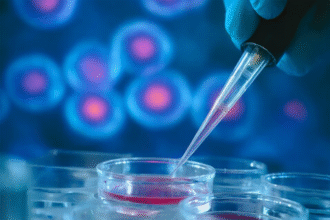Bioinformatics
Bioinformatics is an interdisciplinary field that emerged with the launch of the Human Genome Project. It integrates biology, computer science, mathematics, and physics to analyze and interpret biological data, revealing the underlying principles of life.
Key Points
- Bioinformatics combines computational and biological sciences to process and analyze vast biological datasets.
- Applications include gene and protein sequence analysis, molecular evolution, and disease target discovery.
- Plays a pivotal role in advancing molecular biology, clinical medicine, and drug design.
- Facilitates the integration of multi-omics data for comprehensive disease modeling.
Foundations of Bioinformatics
- Data acquisition and processing:
- Collection of biological data from experiments, sequencing, and imaging.
- Preprocessing techniques to ensure data quality and consistency.
- Data storage and retrieval:
- Development of databases for efficient storage and access to genomic, proteomic, and metabolomic data.
- Examples: GenBank, UniProt, and PDB.
- Data analysis:
- Algorithms for sequence alignment, structural prediction, and functional annotation.
- Tools like BLAST, ClustalW, and R for statistical analysis.
Applications of Bioinformatics
Molecular Biology
- Gene and protein sequence analysis:
- Identification of coding regions, motifs, and regulatory elements.
- Comparative genomics to study evolutionary relationships.
- Molecular evolutionary trees:
- Construction of phylogenetic trees to trace evolutionary lineages.
Clinical Medicine
- Disease target discovery:
- Big data analysis to identify therapeutic targets and biomarkers.
- Examples: Cancer genomics and personalized medicine.
- Multi-omics integration:
- Combining genomics, transcriptomics, proteomics, and metabolomics to model disease mechanisms.
Drug Design
- Structure-based drug design:
- Computational modeling of protein-ligand interactions.
- Virtual screening of compound libraries for potential drugs.
- Biomarker discovery:
- Identification of molecular markers for early disease detection and monitoring.
Medical Imaging
- Image analysis:
- Integration of bioinformatics with imaging techniques for diagnostics.
- Examples: Radiogenomics and AI-driven image interpretation.
Challenges and Future Directions
- Challenges:
- Managing and analyzing the exponential growth of biological data.
- Ensuring data privacy and ethical use of genomic information.
- Future directions:
- Advances in AI and machine learning for predictive modeling.
- Development of cloud-based platforms for collaborative research.
- Integration of bioinformatics with synthetic biology and systems biology.
Patient and Public Education
- Promote awareness of the role of bioinformatics in advancing healthcare and research.
- Encourage discussions on ethical considerations in genomic data usage.
- Highlight the potential of bioinformatics in personalized medicine and disease prevention.
Bioinformatics continues to bridge the gap between biology and data science, driving innovations in research, medicine, and technology to unravel the complexities of life.







